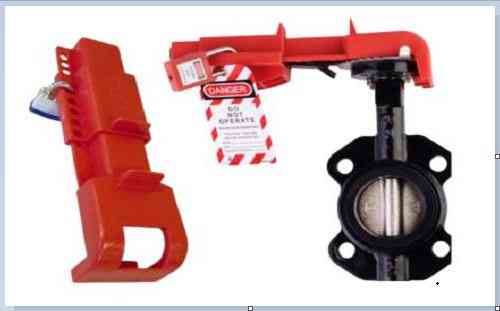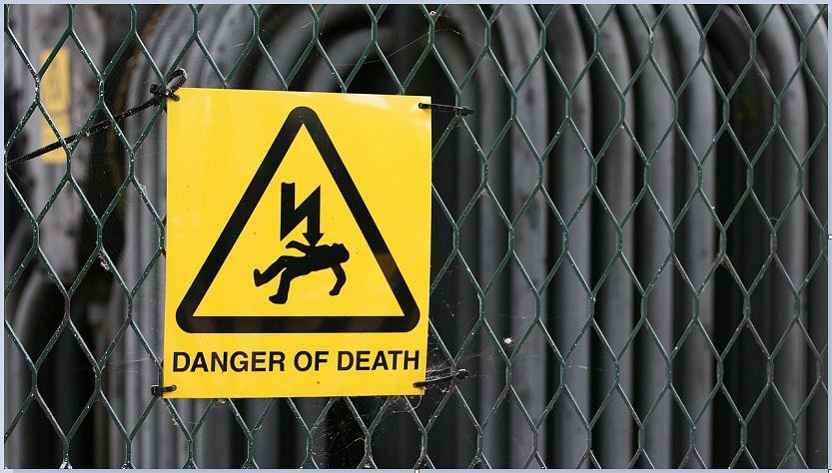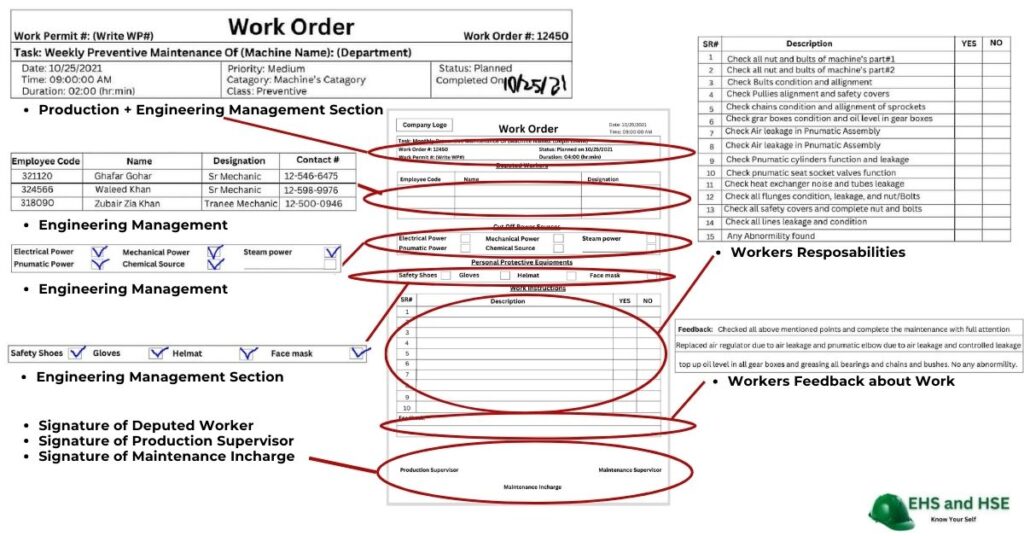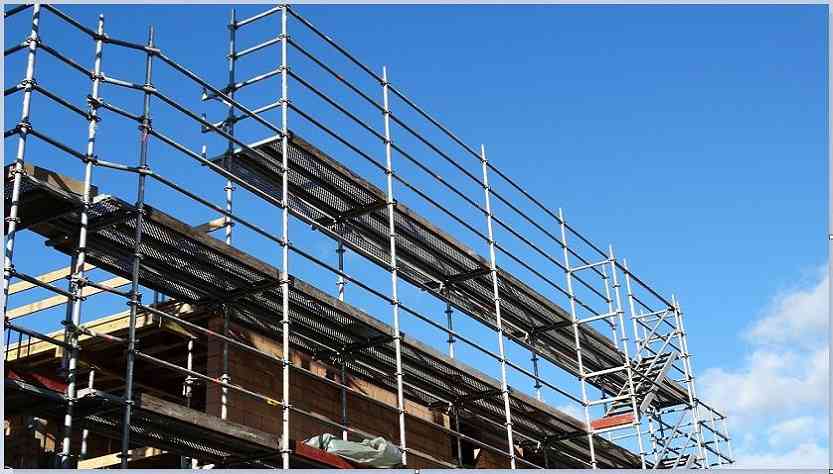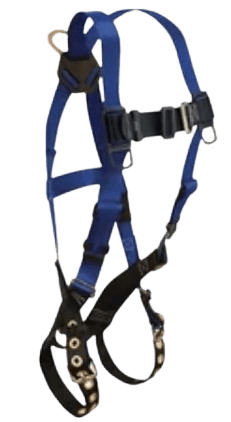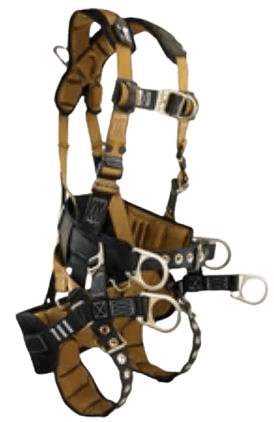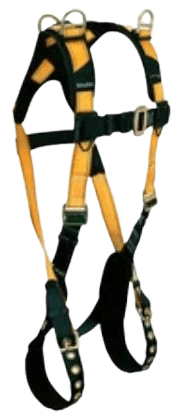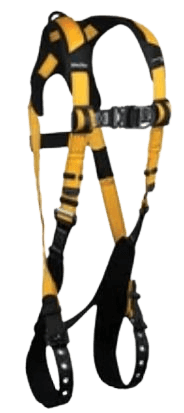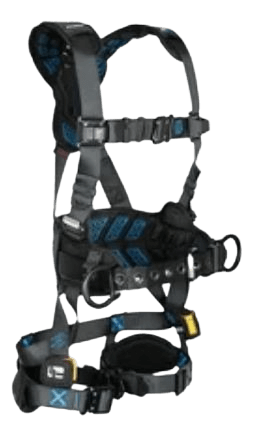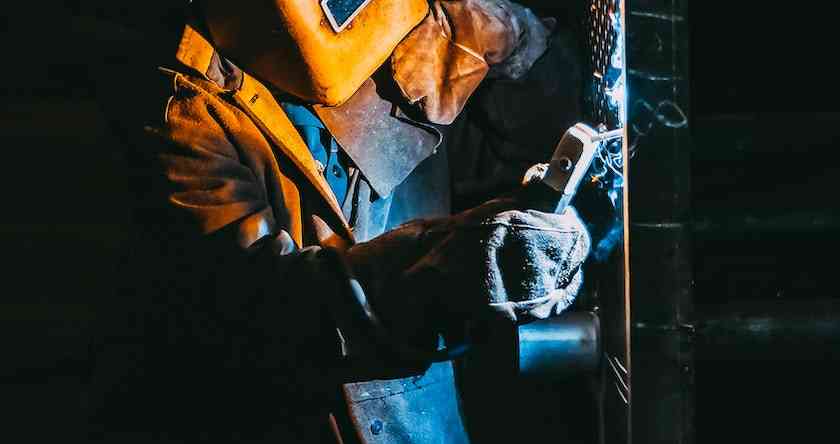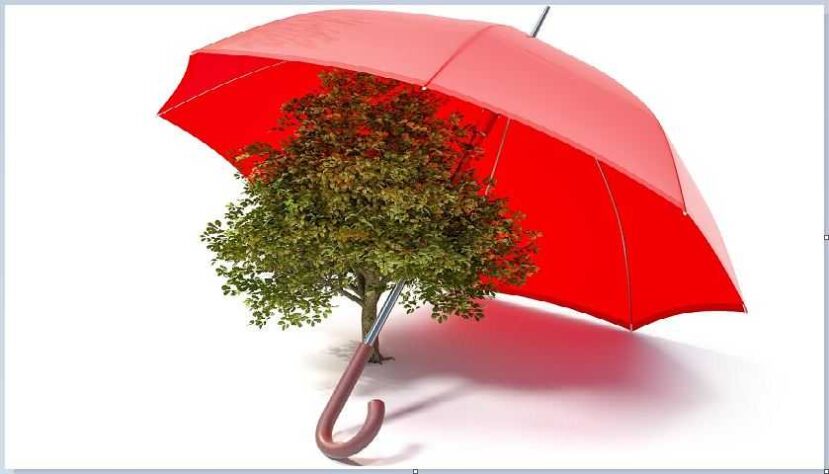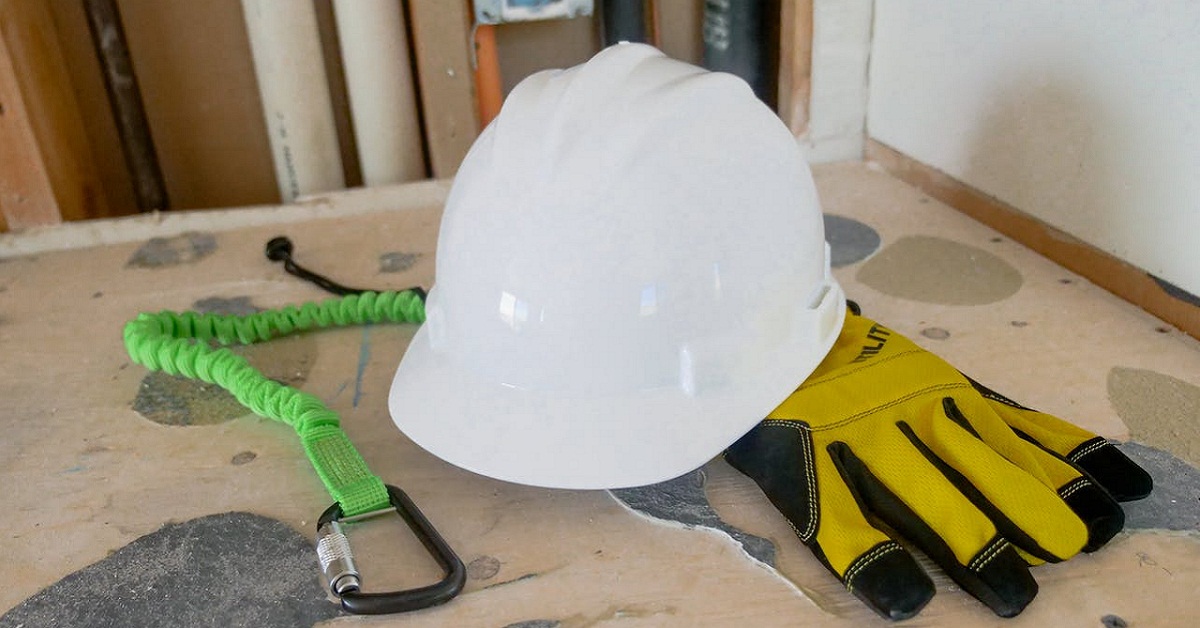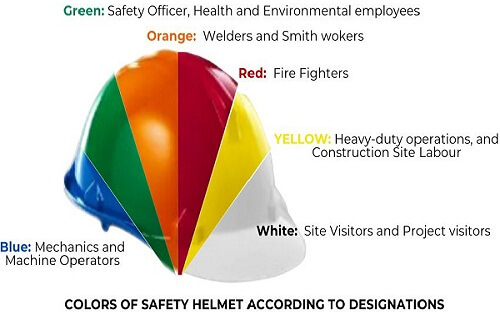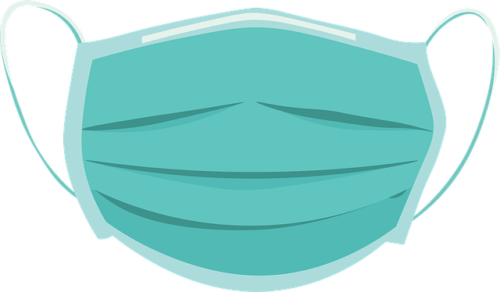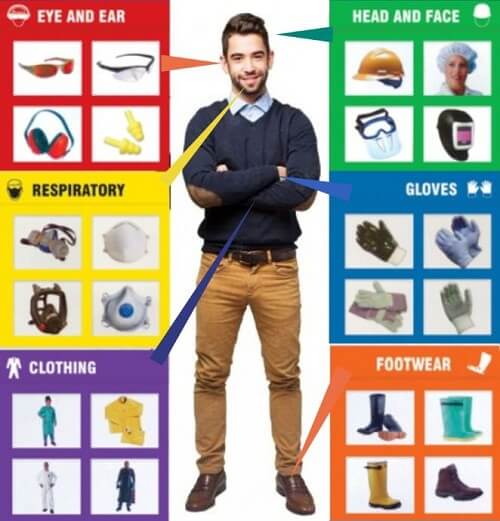What is the Lock Out and Tag out (LOTO)?
Lock out tag out (LOTO) is a procedure, that applies to the machine before starting maintenance on the machine. in this procedure, cut off or close all power sources and hang relevant instruction tags on all power sources to make the machine safe for maintenance and engineering work.
As you can understand, lock-out and tag-out are two words. If the equipment is locked at a close position it means Lock-out. Anyone can’t change the position of this equipment without the key. Second, hang the instruction tag at the lock. Instruction shows why locked this equipment and anyone can’t try to change the position of this equipment. Tag-out warnings to employees not to use this equipment.
Importance of Lockout Tag-out
When mechanics work at the machine they shut off the machine they do not lock out and tag out the machine. In this case, other people who don’t know about mechanics activity at the machine. They switch on the machine this is very dangerous for mechanics. A safety process is very necessary to prevent incidents like this.
Permit to lock out tag out
Work Permit Template
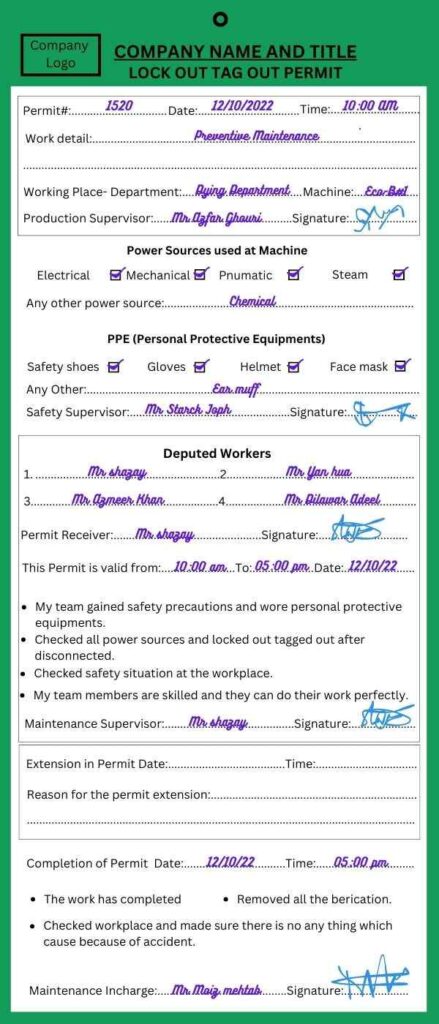
Color Identification
Green color used for LOTO permit identification.
Logo and Title
Company Logo and Company Title with the type of permit placed at the top.
Management Section
They are mostly managed by the cooperation of engineering and production management.
Power Sources and Safety Checklist
A safety supervisor checks and ensures the lock of all power sources and tags all locks.
Deputy Worker
This section is only related to Engineering Management. A supervisor checks and signs it.
Extension of Permit Date Engineering management fills this section if maintenance is not completed. In case of any reason. The extension date, time, and reason should be mentioned on it.
Permit Completion Maintenence supervisor checks the maintenance and signs after the permit
Important Note: Permit filling name is temporary not expected name. If any name matches the actual name I apologize.
LOTO kit
Procedure / Training
- Prepare for shutdown or maintenance
- First, inform the machine or device-related department like processing, boarding, or finishing. Manage maintenance time and date with the supervision authority of this department.
- Notify all employees of the activities and equipment involved.
- Notify all employees about machine or equipment maintenance or shutdown. Inform about the date and time. Because any worker doesn’t start the machine during maintenance. This is very important for the safety of workers and machines.
- Shut down the equipment.
- Shut off the power of the machine and all power sources. Shut off the main electric breaker, close the steam inlet valve, close the compressed air valve, and close the water inlet valve.
- Isolate the equipment from the hazardous energy source.
- Close all energy sources of the machine or equipment.
- 1. Electrical power
- 2. Mechanical Power
- 3. Steam power
- 4. Compressed air
- 5. Hydraulic power
- Close all energy sources of the machine or equipment.
- Dissipate residual energy.
- Dissipate residual energy like steam and compressed air stored in pipes, tanks, and heat exchangers.
- Apply applicable lockouts or tagout devices.
- Properly lock out all valves and devices after closing them. And tag them with related information tags.
After getting the work order to fill out the work permit (Lock out the Tag out permit). Start closing all power sources one by one. These power sources are used in machines.
- Electrical Power
- Mechanical Power
- Steam Power
- Pneumatic Power
- Chemical Power
1. Electrical Power lock
Shut off the electrical breaker then insert the lock device pin through the breaker’s body hole and breaker’s knob hole. If the device controls the knob motion then you should lock the device with a padlock.
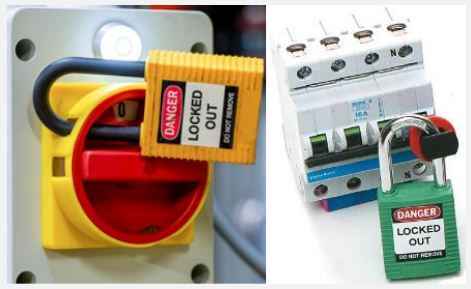
2. Mechanical Power
Mechanical power means the motion of the flywheel, gearbox, and stored power. Stored power can cause the reason for the movement of machine parts. ensure that the machine stops before starting work.
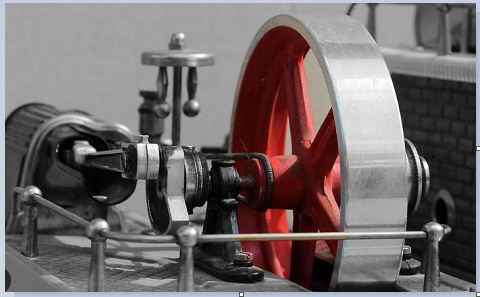
3. Steam Power
Steam power is also a very dangerous power source. For the main steam line, mostly use the globe valve for the steam connection. Close the steam power valve gently. Fit the globe valve cover device and lock the device. The device’s sides have holes for the padlock rod.
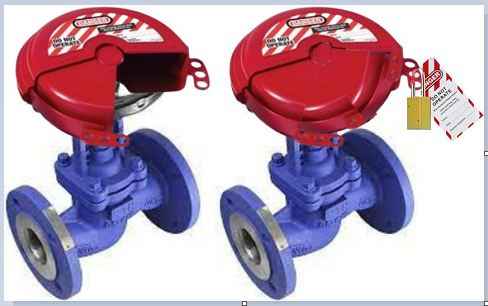
4. Pneumatic Power
If Ball valves or any other type of valve is used in the pneumatic line. Close the valve. Subsequently, close the device at the handle of the ball valve at a valve close position. The device controls the movement of the valve handle. then lock this device and hang a tag at the lock.
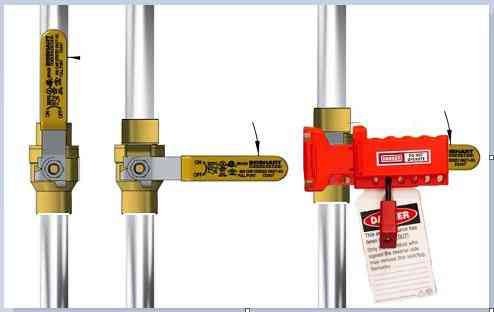
5. Chemical Power
Chemical power is only used in a specific type of machine. The machines which have dye, bleach, wash, and chemical processes use chemical power. Close the valve of the chemical line, lock it out and tag it. Ball valves are used in chemical lines.
Close Water Supply
A butterfly valve or any other type of valve first closes the valve. During the lock-out and tag-out process, close the main supply line of water. The butterfly lock-out device is the same as the ball valve lock-out device.
